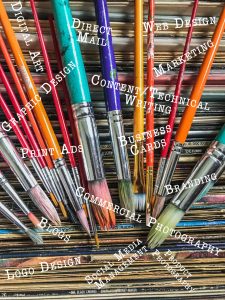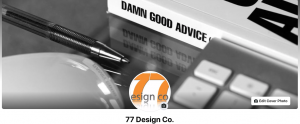It’s no secret that using creativity in marketing translates into success. Whether it’s a T.V commercial or a direct mailer design, customers love ingenuity and originality. This blog will explore some creative measures you can take to up your company’s marketing game.
What is creativity…really?
Creativity is subjective. For example, what one may think is aesthetic another may not. At this point, let’s look at the actual definition. Merriam-Webster defines creativity as: “1: the ability to create //her artistic creativity 2: the quality of being creative” —–> https://www.merriam-webster.com/dictionary/creativity
Pretty vague. You get the point though. Creativity can be minimal or complex. Much like the definition. One of the things we learn in grade school art class is that nothing can be wrong as long as some imagination is applied. The same is true even in college art classes. Instructors look for imagination and passion in a work. When they see lackluster effort the grade slips.
The same is applicable in marketing. Slogans, logos, photography, websites, and more all should be creative. Further, the first thing we hear from a new client is, what? Take a guess. Yep. You guessed it, “I want it to be creative.” At any rate that’s the point!
If our creativity is lacking that customer will not want to work with us. Consumers think the same way. They just aren’t aware of it in many cases. If the creativity lacks, the message is lost. Likewise, the grade slips. So, when something catches their eye, it resonates.
Creativity isn’t always easy.
It’s important to realize that creativity doesn’t come naturally to everyone. After all even the world’s greatest artists historically struggled from time to time. You know the saying, “Rome wasn’t built in a day.” Similarly, it took Michelangelo roughly 4-5 years to paint the Sistine Chapel. He undoubtedly hit creative blocks during that process.
Here are a few things to think about when creating materials for your business:
- Photography. Does the image tell a story? Is it perfectly focused, exposed, and composed? Ask yourself these questions before using an image in marketing. Don’t know what those photographic elements above mean? Google them! Include pattern, texture, or a pop in color. Make the photo(s) as creative as possible.
- Graphic Design. Likewise as above. Does the design use complementary colors to the brand? Is the logo properly placed? Additionally, it should tell a story. Customers will notice. Any design work for brochures, signage, and other print will need to match your company’s brand image. Including alternate colors or fonts/typefaces will send mixed signals. Stay cohesive.
- Website. The site needs to function properly. It should also look like your business cards and other marketing materials. Be creative but also simple. We’ve found simplicity over complexity for sites is better. It keeps a clean look. Many customers will want to stay on a site that’s easier to use too. Of course, mobile friendly as well.
- Social Media. All social media pages will need to match the brand. This includes the messaging content of posts too. These pages are reflective of the company. Equally important, be sure to keep the logo visible. Social media is social. That’s what it’s meant for. However, it is also a great way to create brand identifiability. Make creative and interesting posts for others to engage with.
Final Thoughts.
Creativity is one of the most useful tools you can apply to your marketing. The uses of color, line, composition etc are all powerful tools in art. These elements take a “meh” marketing piece and can turn it into a “WOW!” Finally, a brand that shows creativity in all aspects of marketing will stand out.
Analyze. Create. Achieve.




